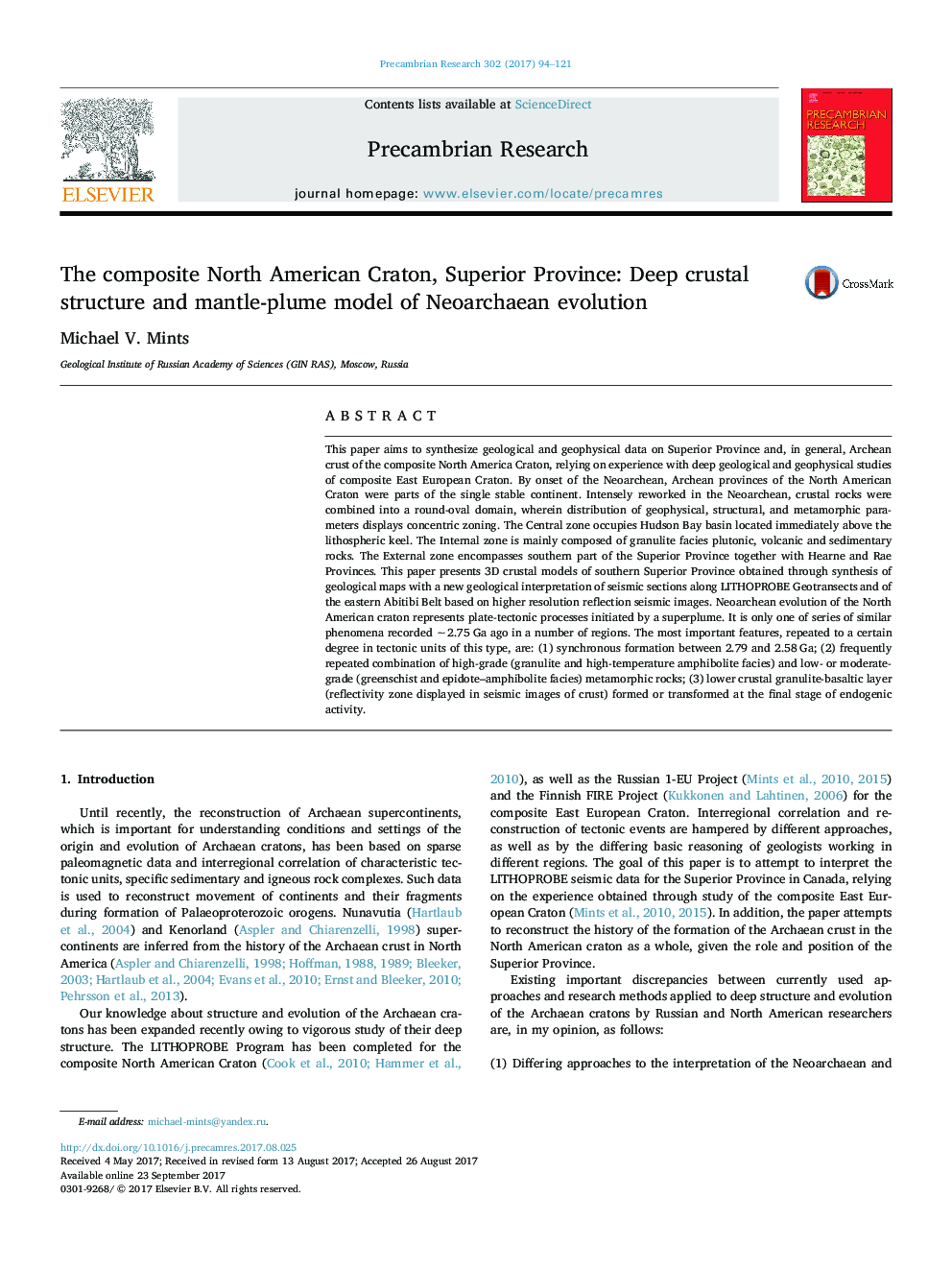| کد مقاله | کد نشریه | سال انتشار | مقاله انگلیسی | نسخه تمام متن |
|---|---|---|---|---|
| 5784652 | 1639573 | 2017 | 28 صفحه PDF | دانلود رایگان |

- Archaean provinces of the North American Craton formed the single stable continent.
- The Neoarchaean NA Craton was an round-oval domain with metamorphic concentric zoning.
- The Neoarchaean evolution of the NA Craton demonstrates leading role of superplume.
- The Neoarchaean superplume initiates and supports local plate-tectonic type processes.
This paper aims to synthesize geological and geophysical data on Superior Province and, in general, Archean crust of the composite North America Craton, relying on experience with deep geological and geophysical studies of composite East European Craton. By onset of the Neoarchean, Archean provinces of the North American Craton were parts of the single stable continent. Intensely reworked in the Neoarchean, crustal rocks were combined into a round-oval domain, wherein distribution of geophysical, structural, and metamorphic parameters displays concentric zoning. The Central zone occupies Hudson Bay basin located immediately above the lithospheric keel. The Internal zone is mainly composed of granulite facies plutonic, volcanic and sedimentary rocks. The External zone encompasses southern part of the Superior Province together with Hearne and Rae Provinces. This paper presents 3D crustal models of southern Superior Province obtained through synthesis of geological maps with a new geological interpretation of seismic sections along LITHOPROBE Geotransects and of the eastern Abitibi Belt based on higher resolution reflection seismic images. Neoarchean evolution of the North American craton represents plate-tectonic processes initiated by a superplume. It is only one of series of similar phenomena recorded â¼2.75Â Ga ago in a number of regions. The most important features, repeated to a certain degree in tectonic units of this type, are: (1) synchronous formation between 2.79 and 2.58Â Ga; (2) frequently repeated combination of high-grade (granulite and high-temperature amphibolite facies) and low- or moderate-grade (greenschist and epidote-amphibolite facies) metamorphic rocks; (3) lower crustal granulite-basaltic layer (reflectivity zone displayed in seismic images of crust) formed or transformed at the final stage of endogenic activity.
93
Journal: Precambrian Research - Volume 302, November 2017, Pages 94-121